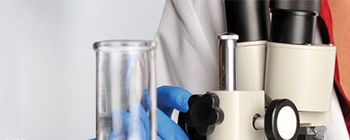Learn More
CD10 Monoclonal Antibody (eBioCB-CALLA (CB-CALLA)), Alexa Fluor™ 700, eBioscience™, Invitrogen™
Mouse Monoclonal Antibody
Supplier: Invitrogen 56010641
Description
Description: The eBioCB-CALLA monoclonal antibody recognizes human CD10 (CALLA, NEP, enkephalinase, Neprilysin), which is a 100 kDa, type II cell surface glycoprotein originally identified for its expression on most acute lymphoblastic leukemias (ALL). Subsequently, CD10 was shown to be the same molecule as the neutral endopeptidase (NEP), or KII-NA. CD10 is a Zn2+-dependent metallo-peptidase with endothelin, glucagon, gastrin, neurotensin and bradykinin included among its substrates. CD10 is involved in the regulation of chemotactic and inflammatory processes involving neutrophils. In B cells, CD10 regulates stromal cell-dependent B lymphopoiesis and expression has also been reported on mature B cells in germinal centres. In addition to the hematopoietic compartment, other major sites of CD10 expression are the brush border of enterocytes and renal tubules and glomeruli. There is partial blocking of the eBioCB-CALLA and MEM-78 monoclonal antibodies indicating that they recognize similar epitopes. Applications Reported: This eBioCB-CALLA (CB-CALLA) antibody has been reported for use in flow cytometric analysis. Applications Tested: This eBioCB-CALLA (CB-CALLA) antibody has been pre-titrated and tested by flow cytometric analysis of normal human peripheral blood cells. This can be used at 5 μL (0.25 μg) per test. A test is defined as the amount (μg) of antibody that will stain a cell sample in a final volume of 100 μL.
CD10 Monoclonal antibody specifically detects CD10 in Human samples. It is validated for Flow Cytometry.Specifications
| CD10 | |
| Monoclonal | |
| 5 μL/Test | |
| PBS with 0.2% BSA and 0.09% sodium azide; pH 7.2 | |
| P08473 | |
| Mme | |
| Affinity chromatography | |
| RUO | |
| 4311 | |
| 4° C, store in dark, DO NOT FREEZE! | |
| Liquid |
| Flow Cytometry | |
| eBioCB-CALLA (CB-CALLA) | |
| Alexa Fluor 700 | |
| Mme | |
| 6030454K05Rik; Atriopeptidase; C85356; CALLA; CD10; CMT2T; common acute lymphoblastic leukemia antigen; common acute lymphocytic leukemia antigen; Enkephalinase; EPN; membrane metallo endopeptidase; membrane metalloendopeptidase; membrane metallo-endopeptidase; membrane metallo-endopeptidase (neutral endopeptidase, enkephalinase, CALLA, CD10); membrane metallo-endopeptidase (neutral endopeptidase/enkephalinase); membrane metallo-endopeptidase variant 1; membrane metallo-endopeptidase variant 2; MME; NEP; neprilysin; neprilysin-390; neprilysin-411; neutral endopeptidase 24.11; SFE; Skin fibroblast elastase | |
| Mouse | |
| 25 Tests | |
| Primary | |
| Human | |
| Antibody | |
| IgG2b κ |
For Research Use Only.



